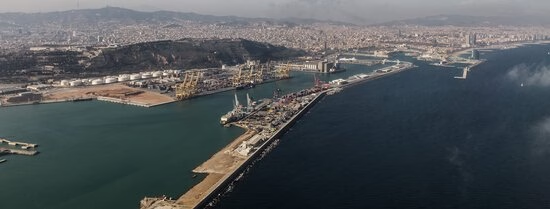How did illustrious nightlife and prostitution disappear from Rotterdam in the 20th century? And how does this past affect today's city? The dissertation by Vincent Baptist (Erasmus School of History, Culture and Communication) provides an interesting insight. The PhD candidate delved into archives and interviewed (former) residents of the Rotterdam neighbourhood of Katendrecht. His research is part of Pleasurescapes, a European research project in various port cities.
Rotterdam has the largest port in Europe. As the port grew, economic activity shifted further and further towards the sea in the 20th century. Sailors came less and less to the inner city, which also changed the character of the city. Nightlife, for instance, looked very different in the last century; typical Rotterdam working-class neighbourhoods turned into a bustling scene full of obscure sailors' pubs at night. This was not always very pleasant. In old newspapers, the PhD candidate found reports of fights, stabbings and robberies.
"The port used to traditionally attract sailors who can only spend a short time ashore and want to have fun," explains the PhD candidate. "They also often have quite a bit to spend and you see that prostitution is common in port cities." Baptist conducted research on the Zandstraat neighbourhood, Schiedamsedijk and Katendrecht. Prostitution was quite normal in those neighbourhoods, but concentrated mainly in Katendrecht after World War II. "The city council wanted to modernise the city and thought the city should reflect how well it was doing in the port. That prostitution was limited to Katendrecht suited the municipality after the war, because it was far from the city centre."
Eros centre on Katendrecht
In the 1970s, crime and nuisance increased noticeably, to the dissatisfaction of many of the residents. The municipality hesitantly sought a solution and considered concentrating all prostitution in one place, similar to the controversial plans in Amsterdam. Among others, a design emerged for a phallus-shaped 'eros centre', proposed by architect Carel Weeber, the researcher found in the archives of the Nieuwe Instituut (New Institute). The city council never decided on this and discontent grew. "There were many protests and criticism of slow decision-making. Eventually, prostitution increasingly moved to the outskirts of the city. That was a long-term process."
While walking through Katendrecht, Baptist also interviewed (former) residents who still experienced the protests in the 1970s. Most residents eventually moved away, for instance because they no longer felt safe. For the researcher, Katendrecht is a classic example of a gentrified neighbourhood. He wanted to find out how (former) residents now view the neighbourhood. Many of those interviewed were still positive. "For instance, they like the fact that the old working-class houses have been refurbished nicely and they still like coming to the neighbourhood. Although they do think the houses have become far too expensive. Of course, I should add that the people who are happy to cooperate in an interview may also be more positive about the neighbourhood beforehand."
M.J. Brusse
For the Zandstraat neighbourhood and the Schiedamsedijk, the PhD candidate drew mainly on archive material, digitised newspapers and historical photos. Rotterdam's well-known NRC journalist M.J. (Rie) Brusse proved a grateful source. These neighbourhoods were also known for prostitution and the abundance of cafés that made sailors love to come there. Schiedamsedijk was razed to the ground by the bombing. The Zandstraat neighbourhood already had to make way for City Hall after the First World War. "Brusse romanticised this working-class neighbourhood in his columns and somewhat opposed the demolition. Yet he returned to this later, in the 1930s. Then he also describes more poverty and crime and the realisation sinks in that the neighbourhood could not be preserved."
With his research, the PhD candidate did not want to merely record the history of the neighbourhoods, but to draw the insights wider and deeper. "Ports are often looked at from an industrial and economic point of view, but they have a cultural impact on a city and that is reflected in these kinds of neighbourhoods. My research links to larger themes such as nostalgia, gentrification and safety. For instance, the interviews show that gentrification is not necessarily always seen as inherently negative. And nostalgia is often not something that is held onto. People recognise that the past is not coming back and don't want it to."
Maritime history and marketing
In Katendrecht, the past can still be seen with a wink. For instance, café de Ouwehoer (translation: Bullshitter) and restaurant De Matroos (The sailor) en het Meisje (the Girl) are a reference to the maritime past. While some former residents see this as a funny reference, others found it contrived and quite cheap. "Someone said to me that a real Katendrechter would never call a café the Ouwehoer. I think the city needs to think how it wants to market itself. Rotterdam remains a port city and can use that as a marketing tool just fine, but at the same time the question is which and how many people you make happy with that."
- PhD student
- More information
PhD defence
On Friday 31 March, Vincent Baptist will defend his dissertation ‘Pleasure near the Port: Spaces and Legacies of Notorious Entertainment Culture in 20th-Century Rotterdam’.
Read more about the European research project Pleasurescapes
Baptist recently got interviewed by Dutch newspaper NRC about his research: 'You must be against it, but gentrification also has another side' (in Dutch)
- Related content

